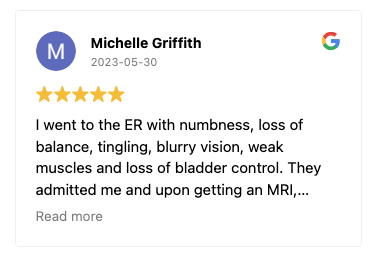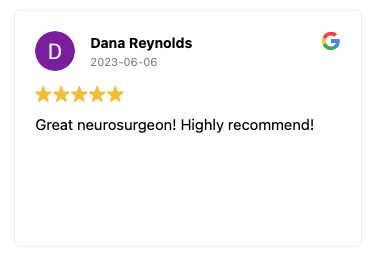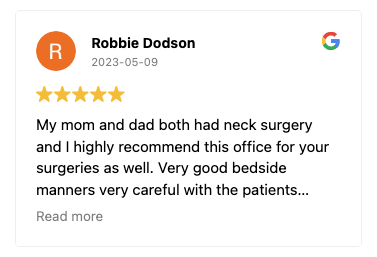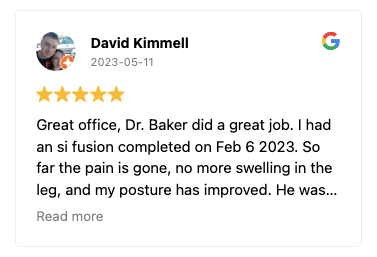C6 Disc Bulging: What You Need to Know
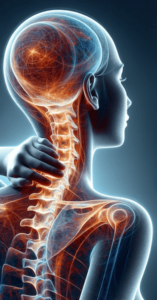
The complexity of the human spine is a marvel of natural engineering, and the cervical spine, in particular, plays a pivotal role in the range of motion and functionality of the neck.
One critical component of this intricate structure is the C6 vertebra, situated in the lower part of the neck, near the base of the cervical spine. Understanding the C6 vertebra and the potential issues that can arise, such as disc herniation and bulging, is essential for anyone experiencing neck discomfort or pain.
The cervical spine, made up of seven vertebrae (C1-C7), is a masterclass in balancing strength and flexibility. It supports the head's weight and enables diverse movements like rotation, bending, and extension.
Each vertebra in the cervical spine, including C6, is separated by an intervertebral disc. These discs act as shock absorbers, cushioning the vertebrae and allowing smooth, pain-free neck movements. However, they are not immune to problems.
C6 herniation and cervical disc herniation refer to conditions where the disc material protrudes beyond its normal perimeter.
Request an Appointment
A herniated disc in the cervical region, especially at the C6 level, can cause neck pain and other symptoms due to its proximity to nerves and the spinal cord. The C6 vertebra's unique position makes it particularly susceptible to stress and strain, often leading to disc issues.
But what exactly causes a disc at the C6 level to herniate or bulge? The reasons can be multifaceted, ranging from acute injury to chronic degeneration.
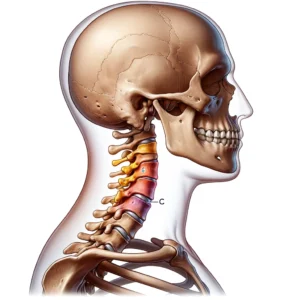
Factors like poor posture, repetitive neck movements, or even the natural aging process can lead to wear and tear of the cervical vertebrae and discs.
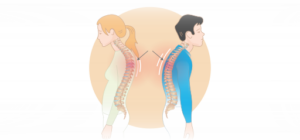
This degeneration can result in the weakening of the disc's outer layer, known as the annulus fibrosus, leading to herniation or bulging of the disc.
Bulging discs differ from herniated discs in that the disc remains intact but expands outside its usual space, often without breaking through the outer layer.
This bulging can put pressure on the spinal nerves or spinal cord, leading to symptoms such as neck stiffness, arm pain, and shoulder pain.
In contrast, a herniated disc involves a crack in the disc's outer layer, allowing the inner material, the nucleus pulposus, to escape. This herniation can lead to more severe symptoms due to the direct impact on spinal nerves or the spinal cord.
While herniated and bulging discs are common issues associated with the C6 vertebra, they are not the only conditions that can affect this area.
Issues like cervical radiculopathy, where nerve roots are compressed, and cervical spondylosis, a general wear and tear of the cervical spine, can also occur.
As we delve deeper into the world of cervical spine health, it's important to remember that each component, including the C6 vertebra and its associated discs, plays a crucial role in our overall spine health and functionality.
Identifying the symptoms and causes of C6 disc problems is the first step toward effective treatment and pain relief. The journey to understanding and managing these conditions begins here, laying the foundation for a deeper exploration of the intricacies of the cervical spine and its ailments.
Anatomy of the Cervical discs
The human cervical spine is a marvel of natural engineering, forming the uppermost section of the spinal column. It consists of seven cervical vertebrae, intervertebral discs, nerves, muscles, and ligaments, all working in unison to support head movements and protect the spinal cord.
The Cervical Vertebrae: Foundation of Neck Movement
Each cervical vertebra is uniquely structured to facilitate neck movements and support the skull. The first two vertebrae, C1 (Atlas) and C2 (Axis), have specialized shapes that allow for nodding and rotation movements. The other cervical vertebrae (C3-C7) have a more uniform structure, characterized by a vertebral body, a vertebral arch, and seven processes. These vertebrae form the protective canal for the spinal cord and serve as attachment points for muscles and ligaments.
Intervertebral Discs: Cushions between Vertebrae
Situated between the vertebral bodies are the intervertebral discs, acting as shock absorbers and allowing flexibility in the neck.
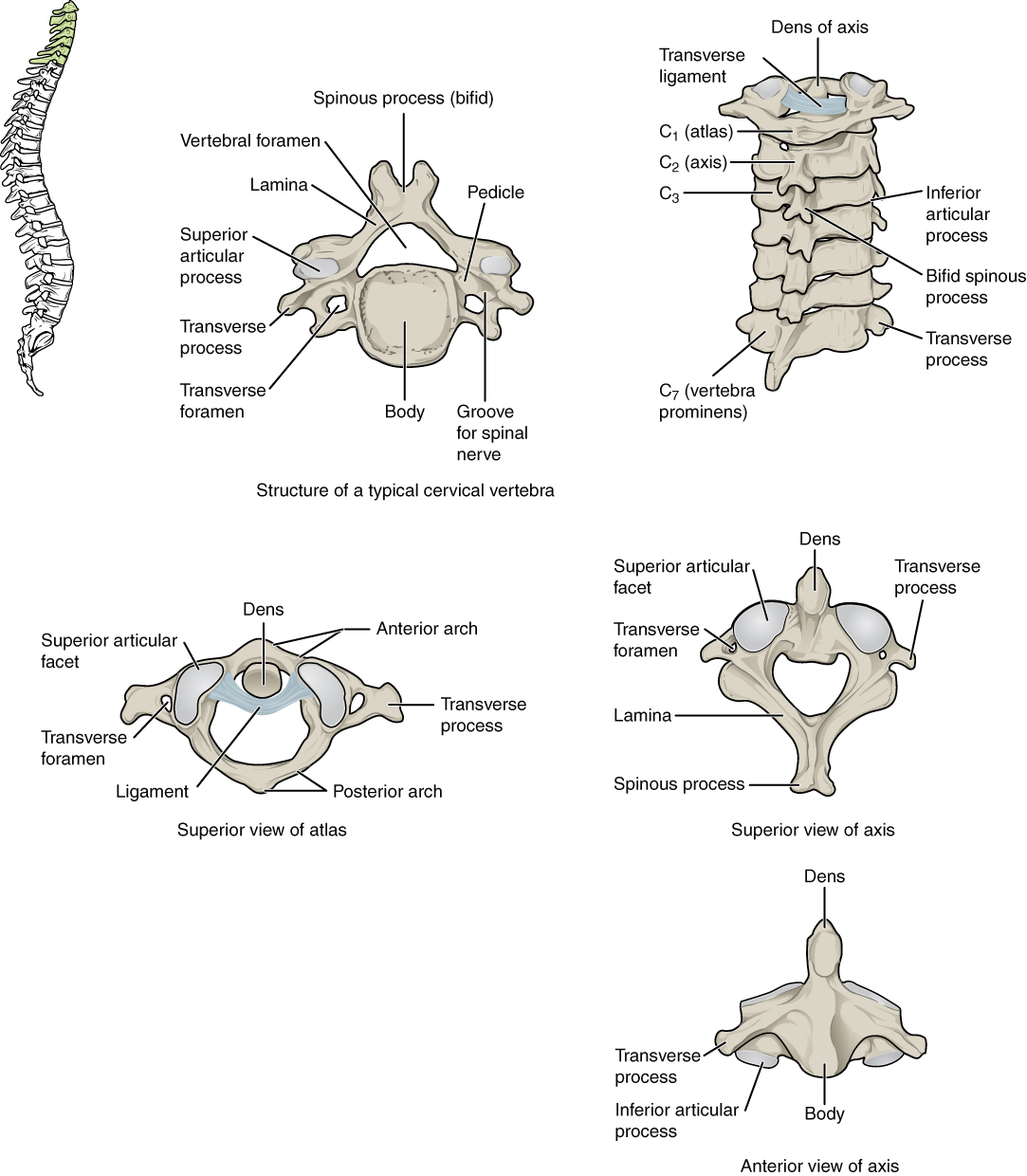
Each disc comprises a tough, fibrous outer layer (annulus fibrosus) and a soft, gel-like center (nucleus pulposus). The discs prevent the vertebrae from grinding against each other and help distribute the forces exerted on the spine.
Spinal Cord and Nerves: The Communication Highway
The spinal cord, running through the cervical vertebrae, is a critical part of the central nervous system. Nerves branching off the spinal cord (spinal nerves) exit through small openings called intervertebral foramina. These nerves transmit signals between the brain and the rest of the body, controlling various functions and sensations.
Facet Joints and Ligaments: Stability and Support
Facet joints, located between the back portions of adjacent vertebrae, guide and limit the movement of the cervical spine. Ligaments, such as the nuchal ligament and ligamenta flava, provide additional support and stability, preventing excessive movement that could damage the spinal cord or nerve roots.
The Cervical Discs' Role in Bodily Functions
The health of cervical discs is crucial for overall spine health and body function. Healthy discs ensure proper nerve function, prevent nerve root compression, and maintain neck flexibility. The cervical discs' ability to function correctly affects not just neck movements but also the health of the upper body, including the shoulders and arms.
Impact of Disc Disorders on Body Function
When cervical discs are compromised due to herniation, bulging, or degeneration, they can affect nerve function and cause symptoms like neck pain, arm pain, and muscle spasms. These conditions can lead to cervical radiculopathy or spinal cord compression, impacting mobility and quality of life.
Telltale Symptoms of C6 Disc Problems
C6 disc problems, including herniated or bulging discs, can manifest in a range of symptoms, significantly affecting quality of life. Understanding these symptoms is crucial for early diagnosis and effective treatment.
Early Signs: Neck Pain and Stiffness
The onset of C6 disc problems often starts with neck pain. This discomfort can range from a dull ache to sharp pain, particularly around the cervical spine area. Stiffness in the neck, often exacerbated in the morning or after prolonged periods of inactivity, can also be a telltale sign. Limited range of motion, where turning or tilting the head becomes painful or restricted, is another early indicator.
Progression to Radicular Pain
As the condition progresses, patients might experience radicular pain. This pain radiates from the neck down to the shoulder, arm, and even to the fingers, particularly the thumb and index finger. This is due to the compression or irritation of the C6 spinal nerve.
Arm Pain and Muscle Weakness
Patients may also experience arm pain and muscle weakness. This symptom arises as the herniated or bulging disc impinges on the nerves that supply the arms. The pain is often described as shooting or burning and is commonly accompanied by a tingling sensation or numbness.
Shoulder Discomfort and Reduced Mobility
Shoulder pain and discomfort are also common with C6 disc issues. This can lead to reduced mobility in the shoulder joint, affecting daily activities like lifting or reaching out.
Advanced Symptoms: Spinal Cord Compression
In advanced cases, spinal cord compression can occur, leading to more severe symptoms. These might include bowel and bladder control issues, severe muscle spasms, and persistent pain. This stage requires immediate medical attention as it can lead to long-term damage.
Neurological Symptoms: Nerve Root and Spinal Nerve Involvement
Neurological symptoms can manifest when the herniated disc material or bulging disc presses against the nerve roots or spinal nerves. This pressure can lead to symptoms like sharp pain in the neck and arm, muscle spasms, and in some cases, a condition known as cervical radiculopathy.
Imaging and Diagnosis: Magnetic Resonance Imaging (MRI)
For an accurate diagnosis, magnetic resonance imaging (MRI) is often employed. MRI can reveal the extent of disc herniation and its impact on the surrounding neural structures.
Non-Surgical Treatments: Physical Therapy and Pain Management
In many cases, non-surgical treatments such as physical therapy can provide significant pain relief and improve neck movements and overall spine health. Pain management, including medication and therapeutic exercises, can also alleviate minor symptoms and improve quality of life.
Scoliosis and Bulging or Herniated Discs
Scoliosis, a condition characterized by an abnormal curvature of the spine, can significantly impact the management and progression of bulging or herniated discs, particularly in the cervical region. Understanding the intersection between these conditions is crucial for effective treatment.
Impact of Scoliosis on Disc Health
Individuals with scoliosis often experience altered spinal mechanics, which can lead to increased stress on the intervertebral discs. This added pressure can exacerbate the risks of disc herniation or bulging, especially in the cervical area where the spine naturally curves. The irregular load distribution in scoliotic spines may accelerate disc degeneration, leading to cervical disc herniations more frequently than in those without scoliosis.
Research Insights into Complications
Medical research underscores the complexity of treating herniated discs in patients with scoliosis. Studies published in spine health journals have shown that the irregular spinal canal shape in scoliosis can complicate both the diagnosis and treatment of cervical herniated discs. For instance, the altered neck curvature and vertebral body alignment in scoliosis patients can obscure the typical symptoms of a herniated disc, such as radiating arm pain or neck stiffness.
Surgical Considerations and Challenges
When surgical procedures are required for cervical herniated discs in scoliosis patients, surgeons face unique challenges. The irregularities in spinal alignment, such as atypical neck curvature and the position of the vertebral bodies, demand a tailored approach to surgical interventions like spinal fusion or discectomy. The presence of scoliosis can also affect the stability of the spinal column post-surgery, necessitating careful planning and possibly more extensive procedures.
Physical Therapy and Posture Management
Physical therapy plays a vital role in managing herniated discs in scoliosis patients. Therapeutic exercises tailored to address both conditions can help strengthen neck muscles and improve spinal alignment. Attention to sleep head positioning and everyday posture is particularly important for these patients to reduce the strain on the cervical spine and slow the progression of disc herniation.
Risks Associated with Spinal Stenosis
Scoliosis can increase the risk of developing spinal stenosis, a condition where the spinal canal narrows, potentially compressing the spinal cord and nerves. This complication can further aggravate the symptoms of a herniated cervical disc, leading to more severe pain and neurological issues.
Diagnostic Challenges: MRI and Pinched Nerves
Magnetic resonance imaging (MRI) is a key diagnostic tool for both scoliosis and cervical disc herniation. However, the altered anatomy in scoliosis patients can make it challenging to identify the exact location of herniated discs or pinched nerves, necessitating more detailed imaging and careful interpretation.
The Role of Corrective Stretches and Posture
For those with mild scoliosis and disc herniations, corrective neck stretches and posture adjustments can provide significant relief. These non-invasive approaches help align the cervical spine, alleviating the pressure on affected discs and nerves.
In Conclusion
The journey through understanding C6 disc bulging has been an enlightening one, revealing the intricacies of the cervical spine and the vital role it plays in our overall health and well-being. From the anatomy of the cervical discs to the telltale symptoms of C6 disc problems, and the special considerations for individuals with scoliosis, this comprehensive exploration sheds light on the complexities of spinal health.
It underscores the importance of early detection, appropriate treatment, and ongoing management to ensure a life free from the debilitating effects of cervical spine issues. As we close this discussion, remember that knowledge is power. Armed with this information, you can better understand the signs and symptoms of C6 disc bulging and take proactive steps towards maintaining a healthy spine. Whether it's seeking medical advice at the first sign of pain, adopting a healthier posture, or exploring treatment options, your journey to spine health begins with awareness and ends with action.
Frequently Asked Questions
What Does a C6 Bulging or Herniated Disc Mean?
A C6 bulging or herniated disc refers to a condition where the disc between the sixth cervical vertebrae (C6) and its neighboring vertebral body protrudes abnormally or ruptures. This disc is a cushion-like structure in the spine that helps absorb shock and enables flexibility.
In a herniated disc, the disc's outer layer, or annulus fibrosus, tears, allowing the inner gel-like material, the nucleus pulposus, to leak out. This can put pressure on the spinal nerve nearby, leading to various symptoms. In contrast, a bulging disc remains intact but extends outside its usual boundary, often without breaking the outer layer.
Poor posture, repetitive strain, or injury can contribute to these conditions, causing the disc to bulge or herniate. Common symptoms include neck pain, arm pain, and sometimes tingling or weakness in the arms or hands. Understanding these conditions is key to seeking appropriate treatment and managing the symptoms effectively.
What are the causes of C6 disc herniation?
How are C6 Bulging Discs treated surgically?
Dr. Abdul Baker - An Expert Neurosurgeon in Texas
Every neurosurgery has its complications; thus, a patient must choose the best neurosurgeon for himself. Dr. Abdul Baker is one of the most experienced and qualified neurosurgeons in Texas, treating patients for more than 16 years. People in Sherman, Plano, and nearby areas trust him for every kind of neurosurgery due to his surgical procedures’ 100% success rate. You may visit him if you need any consultancy or treatment regarding your brain and spine disorders.


Dr. Baker specializes in neurosurgery, neurosurgical spine surgery, neurotrauma, brain tumors, spinal tumors, and peripheral nerve damage treatment.
